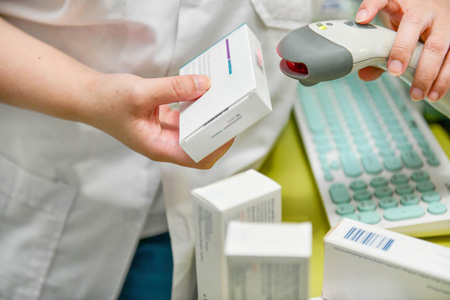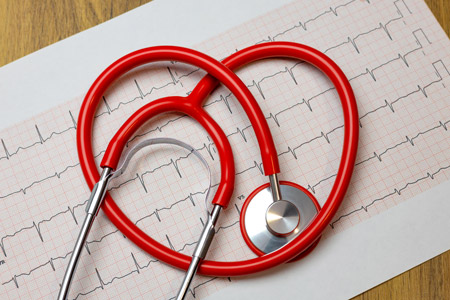


Conquering Cravings and Eating For Your Menstrual Cycle
Did you know your cravings are based on more than just what you love to eat? In fact, cravings are your body's way of trying to get what it needs. Practicing intuitive eating, which is eating when hungry and relying on craving cues, is a great way to balance your hormones and ensure you get the appropriate nutrients and macros.
However, when you’re overwhelmed by cravings for chocolate and ice cream, or pickles and chips — especially around menstruation — you might find yourself thinking, “This can’t actually be everything my body needs,” and you’re not wrong.
So, we’ve put together a quick guide for food to eat during the different phases of your cycle to help curb cravings and make you feel great all month long. Just keep in mind that you should always consult with a medical professional about your unique diet needs before making any diet changes.
We’ll explain the different phases of the menstrual cycle and which food is most optimal during each phase — so you scratch your ice cream itch while feeling satisfied from getting the key fruits, veggies, and proteins you need into your diet.
What Are The Phases of a Menstrual Cycle?
Although the term ‘menstrual’ is most commonly associated with women’s monthly periods, the cycle actually lasts all month long and is broken down into several phases.
In the average 28-day menstrual cycle, there are four different phases: follicular, ovulatory, luteal, and menstruation. During each one of these phases, your body is trying to accomplish some pretty hefty goals and needs different types of macro and micronutrients to do the best job possible. Let’s dive into what foods are going to fuel your body the best during each phase!
Foods For Your Follicular Phase
During the Follicular Phase (the first phase in the cycle) your pituitary gland releases a hormone called follicle-stimulating hormone (FSH), which stimulates the follicles in your ovaries to mature. The goal of your body here is to prepare the egg for possible fertilization and get ready for ovulation.
During the Follicular Phase, you’ll generally feel full of energy — and studies suggest you might even be more willing to take risks! To make sure your body can produce the most amount of energy possible try eating some of these foods:
- Fruits and Vegetables: Take advantage of the benefits of leafy greens and nutrient-rich fruits like artichokes, broccoli, garlic, avocados, carrots, zucchini, kimchi, and plums.
- Proteins: Fuel your body to push through exercise and other activities in this high-energy period with proteins like chicken, eggs, and trout.
- Nuts, Millets, and Herbs: Round out your meals with nourishing nuts and herbs like cashews, buckwheat, mint, and parsley so you can stay fuller for longer.
Foods For Your Ovulatory Phase
Next up we have the Ovulatory Phase, which is the culmination of all the hard work your body did to get your egg ready. During ovulation, your egg will drop and be ready for fertilization. Luckily you’ll still be full of energy and to capitalize on that, try adding some of these foods into your diet.
- Fruits and Vegetables: Add lots of color to your diet with fruits and vegetables like eggplant, tomatoes, spinach, asparagus, brussels sprouts, raspberries, and strawberries. These veggies would make an amazing salad — or throw asparagus and brussel sprouts into your oven or air fryer for a crunchy treat!
- Nuts, Seeds, Spices, and Legumes: Additionally, to keep your energy high you can sprinkle in popular ingredients like amaranth, quinoa, red lentil, almond, turmeric, and pistachio.
- Proteins: Branch out with your protein sources in this phase with foods like lamb and salmon.
Foods For Your Luteal Phase
After ovulation, your body enters into the luteal phase. The second half of this phase is notoriously difficult for many women, but luckily an optimized diet can help counteract uncomfortable symptoms. You might feel PMS symptoms like cravings for carbohydrate-heavy comfort foods, bloating, breast tenderness, headaches, anxiety, and moodiness. These symptoms are not all in your head but they aren't something you should suffer through either. Try a quick grocery hall of these foods to help you through this difficult phase.
- Fruits and Vegetables: While you should be consuming nutrient-rich plant foods all month long, adding extra of these foods to your diet can help counteract the side effects of your luteal phase. Try adding ingredients like kimchi, cabbage, cauliflower, celery, daikon, radish, squash, sweet potato, apple, date, peach, and raisins to your meals.
- Nuts, Herbs, Seeds, Spices, and Legumes: Craving carbs? Your body will love it if you can add things like ginger, chickpeas, brown rice, mint, walnuts, sesame, pine nuts, spirulina, and parsnips to your diet.
- Proteins: Though you may be reaching for junk food more during your luteal phase, now is not the time to skimp on protein. Get lots of beef, turkey, cod, and halibut into your stomach this week to promote fullness.
Foods For Your Menstruation Phase
Finally, we have menstruation. During this phase, most women feel at their lowest energy point — and may just feel plain tired. Sometimes the best thing is just to rest and try munching on a few items off this list. Just know in 3-7 days on average you’ll return to having loads of energy!
- Fruits and Vegetables: Replenish your body with vitamin-rich ingredients like beets, kelp, kale, blackberries, and blueberries.
- Proteins: Fuel your mind for the new month ahead with shellfish that are high in omega-3 fatty acids, vitamin B12, and zinc like scallops and mussels.
- Nuts, Seeds, and Supplements: Treat yourself and get your snack on with healthy alternatives like liquid aminos, flax seeds, and water chestnuts.
The foods we’ve covered today are just a few nutrient-dense options you have to fuel your body during your cycle. These foods can and should be balanced with the foods you crave to help your body perform at its best throughout the entire month. But, this list is not exhaustive and you should always consult with a registered dietitian or medical professional about your unique diet needs before making any sizable lifestyle changes.


.jpg)
.jpg)
.jpg)


















.jpg)





















.jpg)

















.jpg)


























.jpg)
.jpg)
.jpg)









